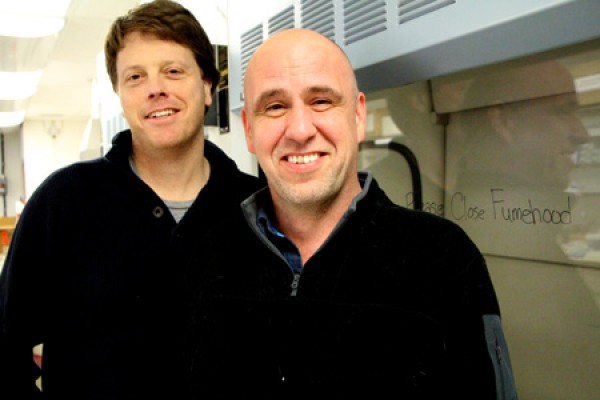 Aaron Fisk, left, and Nigel Hussey, are two of the authors on a new journal paper which suggests it's time to reconsider standards used to classify organisms in to various categories in the food chain.
Aaron Fisk, left, and Nigel Hussey, are two of the authors on a new journal paper which suggests it's time to reconsider standards used to classify organisms in to various categories in the food chain.
It’s time for conservation managers and those who do everything from set fishing quotas to establish how endangered and threatened species are listed to completely rethink how we regulate ecosystems, according to a pair of scientists who have authored a paper that challenges how organisms are classified in food webs.
“I think this is a real game changer,” said Aaron Fisk, a professor in the university’s Great Lakes Institute for Environmental Research, and co-author on the paper, which was published in the journal Ecology Letters. “It might be one of the most important things I’ve done as a scientist.”
Lead author Nigel Hussey, a post-doctoral research associate in Dr. Fisk’s lab, says the paper challenges the standards used to assign various species numeric trophic positions within food webs.
Until now, it’s been believed that food webs in ecosystems contain four levels. The first, or lowest level, are primary producers and consist of plants and algae; the second level are herbivores, which eat plants and are called primary consumers; the third are carnivores which eat herbivores, and are called secondary consumers; the fourth level consists of predators at the top of the food chain.
Ecologists typically use the analysis of stomach contents, as well as carbon and nitrogen stable isotope values from their bones and muscle tissue, to determine what organisms have been feeding on, in order to assign them a numerical trophic position and categorize them within one of those four trophic levels.
At issue, according to Dr. Hussey, is the standard that’s used to assign trophic position. For the last several decades, ecologists have known that heavier stable isotopes become more enriched in a consumer than in the food they eat, and have agreed that they increase by a standard additive factor of 3.4 parts per thousand in the consumer..jpg)
Based on their meta-analysis of experimental data and tissue samples collected from such various marine organisms as sharks and manta rays from as far away as the Canadian Arctic and off the southeast coast of Africa, Hussey and his partners believe that 3.4 multiplier is no longer reliable, and that there could be as many as six or seven trophic levels.
And the higher the numeric value an organism is assigned in their “scaling” theory, the greater the likelihood is that there are fewer individuals of that species within a trophic level, Hussey said. Given that ecosystem managers rely on this scientific data to conduct population estimates of species within various systems, the paper could force those policy makers to reconsider how they arrive at those numbers.
“If you incorrectly designate the trophic position of an organism at a lower level, you’re assuming that there’s a much higher number of that species,” Hussey said. “If you follow our approach, food webs become longer and top predators like Great White sharks for instance are at a much higher trophic position than what we originally thought. That could really throw off all of your population estimates.”
Dr. Hussey will discuss the paper when he appears today on Research Matters, a weekly talk show that focuses on the work of University of Windsor researchers and airs every Thursday at 4:30 p.m. on CJAM 99.1 FM.
